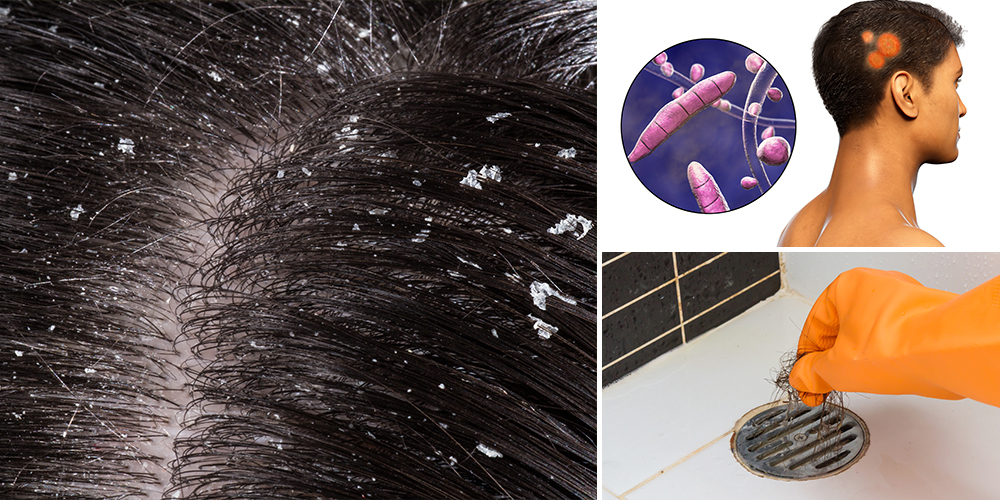
7 Signs You Have Moldy Hair
Technically, molds cannot grow in your hair and scalp. However, other types of fungi can develop and manifest that moldy smell. Hair and scalp fungal infections happen because of hygiene malpractice and improper hair care. Infections exist but do not necessarily show signs unless they worsen and develop itching, bald patches, and odor. Medicated shampoos may clear out scalp infections and encourage healthier hair growth. Essential oils are also great for treatment and prevention when used with mindful hair practices and lifestyle changes.
7 Signs of Scalp Fungal Infection
Molds are fungi that thrive in dark places with poor ventilation and reproduce through spores. These fungi cannot thrive on the hair shaft unless you are overly neglectful and unhygienic. No research or scientific evidence has proven that molds can grow and stay in the hair. However, other microorganisms like yeast may overgrow on the scalp and cause an infection. These microscopic organisms that thrive on the scalp are not usually visible to the naked eye. Additionally, while molds cannot grow in the hair, you may still be exposed to molds and mildew that thrive in your pillow. It occurs if you constantly sleep with wet hair. The telltale signs of a scalp fungal infection include:
Dandruff
Chronic dandruff that does not go away with anti-dandruff shampoo indicates a scalp infection. Hair product irritants, hormonal changes, stress, and other environmental factors may cause the scalp to flake. It may also be likely due to Malassezia globosa, a yeast-like fungus that thrives on scalp oils.
Sticky Hair Strands
Sticky residue caused by a buildup of hair products like conditioner and gel is easily removed by showering. However, if it is a frequent occurrence, it may also mean an overgrowth of fungi like Tinea capitis (scalp ringworm) and Piedra. Exposure to mold in bedding can lead to seborrheic dermatitis, where excess sebum gives hair a sticky feel.
Musty Smell
A moldy and mildew-like smell emanating from the hair may indicate an overgrowth of yeast. The stale, oily, and earthy smell is exacerbated by sweating but is also noticeable even after washing.
You may not smell it… but others do.
That faint, musty, sour scent that clings to your hair, even right after washing. It’s not just a dirty scalp. It’s often fungal overgrowth, and regular shampoo won’t cut it.
That’s why I keep this antifungal spray within reach.
It doesn’t mask the smell, it kills what causes it. Just a few spritzes on the scalp, and the Usnea gets to work.
When you don’t have time to shampoo, or when shampoo simply fails, you need something that fights back.
👉 Click here to see what I use when shampoo isn’t enough.
Gray, Yellow, or Whitish Dots
It is likely a Piedra fungal infection if you notice some gray, white, or yellow nodules in your hair shaft. It resembles dandruff, but the clusters are firmer, which looks like a stone deposition and is hard to remove without breaking the hair strand.
Pustules and Redness
Infections in the hair follicles cause inflammation and often give rise to folliculitis or scalp pustules. These pus-filled bumps are red, itchy, painful, and unsightly, especially if found in the front hairline. These scalp pimples may require antibiotics, antifungal medications, or topical acne treatments.
Patches of Hair Loss
Fungal spores shed on the scalp may inflame it and weaken the hair follicles. This may result in brittle and falling hair, leading to temporary hair loss. If left untreated, the fungal infection may cause permanent baldness.
Scaling of the Scalp
Scalp infection causes inflammation and excessive scaling. The noticeable yellow scales that adhere to the dry scalp resemble asbestos, medically called pityriasis amiantacea. Scalp scaling may be due to seborrheic dermatitis triggered by an overgrowth of yeast on the scalp.
Remedies for Moldy Hair
A scalp fungal infection may be treatable, but it requires time to heal completely. An antifungal scalp treatment may take at least two weeks to clear up. Other cases may require oral medication aside from medicated shampoos and creams. Good scalp hygiene is the key to infection prevention and to promoting a healthier scalp. Wash your hair correctly to prevent fungi from thriving on the grease, sweat, dirt, and dust. Here are some tips to maintain a healthier scalp environment.
- Never go to bed with wet hair.
- Avoid sharing personal items like combs and hairbrushes. Replace your grooming tools frequently.
- Cut down or avoid hair styling products if necessary.
- Refrain from scratching your scalp.
- Manage inflammation and infection with home remedies for fungal infections.
Here’s what most people don’t realize: the tiniest habits can be the biggest triggers. Going to bed with damp hair, using the same unwashed brush for weeks, or constantly piling on styling products—these are the little things that quietly set the stage for fungal overgrowth.
I learned these prevention tips (and what not to do) from digging through old folk practices, herbal wisdom, and recent science-backed resources. When you know what causes moldy hair in the first place, it becomes much easier to stop it before it starts. If you want to explore what might be triggering it and how to avoid it, just click here.
Herbal Remedies for Hair and Scalp
Natural and herbal alternatives may prevent, treat, or manage scalp infections. They contain compounds that rid the scalp of infection and make the scalp environment less tolerable for fungi to thrive. Some of the items below may help:
Apple Cider Vinegar
Diluted apple cider vinegar has antimicrobial properties that inhibit the growth of microorganisms on the scalp surface. Its acidic nature helps restore the scalp’s natural pH balance, inhibiting fungal growth.
Tea Tree Oil
The essential oil of tea tree (Melaleuca alternifolia) is a natural remedy for several skin problems. It is a powerful antiseptic that kills bacteria, viruses, and fungi on surfaces. It moisturizes the scalp and unclogs the hair follicles to prevent fungi from building on them.
Coconut Oil
Coconut oil is an age-old hair care product that modulates the scalp microbiome, supporting healthier growth and protecting hair from damage. It is excellent for managing a dry and itchy scalp, preventing its flaking, and treating scalp yeast infections. Coconut oil is made from filtered fresh coconut milk and also promotes hair growth and overall scalp health. By fractionating it, the medicinal properties it once had were eliminated via the fractionation process. This is why you may not use fractionated one, but rather only use natural coconut oil for remedies. It is a pain sometimes due to hardening at room temperature, but it melts fast in a warm water bath. I used fractionated oil in the recipe below to avoid the extra steps.
Rosemary
Rosemary (Rosmarinus officinalis) is a hair growth-promoting herb that helps reverse pattern baldness. Fresh or dried rosemary infusion can be substituted for a hair rinse. Rosemary essential oil may also be used as a scalp massage oil. Applying it to the scalp prevents fungal infection and stimulates hair follicles to treat hair loss. Always dilute an essential oil before applying it to the body. 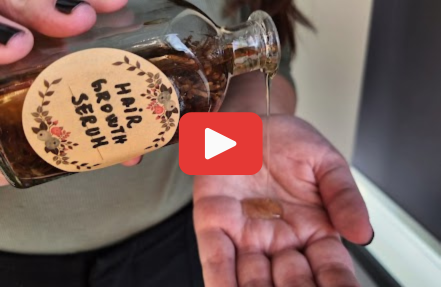 If you’ve ever seen your hair clog the shower or bathtub drain, or you’re collecting clumps of it from your hairbrush, then you really need to try this. I’ve been there for years myself. My hair got so thin, you could see my scalp at one point. But now it’s thicker, fuller, and healthier than ever. I just want you to try the serum that saved my hair, and hopefully can do the same for you as well. You can check it out here.
If you’ve ever seen your hair clog the shower or bathtub drain, or you’re collecting clumps of it from your hairbrush, then you really need to try this. I’ve been there for years myself. My hair got so thin, you could see my scalp at one point. But now it’s thicker, fuller, and healthier than ever. I just want you to try the serum that saved my hair, and hopefully can do the same for you as well. You can check it out here.
Baking Soda
Baking soda is best for removing the buildup of hair styling products to cleanse the hair and scalp. It is a gentle exfoliant that removes dead skin cells and reduces flaking. It also helps balance the scalp’s pH level to inhibit fungal growth.
Homemade Antifungal Shampoo
Maintaining healthy hair dramatically impacts overall health and boosts self-esteem. That is why it is crucial to maintain proper hair and scalp care to prevent health and hygiene issues. Here is a well-recommended recipe to prevent and treat a scalp infection.
And no—it’s not about the shampoos lining supermarket shelves. Most of those are filled with synthetic fragrances, hormone-disrupting preservatives, and cheap foaming agents that dry out your scalp, weaken your follicles, and make fungal overgrowth worse. If your scalp feels tight, itchy, or flaky even after washing, this could be why.
Some of the worst offenders to look out for include sulfates like SLS, parabens, phthalates, and even hidden formaldehyde-releasing preservatives. But that’s just the beginning.
If you’re still buying shampoos from big box stores, you have to know what’s in them, because once you put it on your scalp, it’s already too late. I put together a short list of what to avoid and what to watch for—click here if you want to see it.
The recipe uses simple but potent ingredients you can find in supermarkets and online stores. It will last a week in the refrigerator, so try to make it in small batches. You can double the recipe if you like.
Ingredients
- ¾ cup coconut milk
- ½ tsp fractionated coconut oil
- 1/8 to ¼ cup liquid castile soap
- ¼ cup purified water
- ½ tsp apple cider vinegar
- ½ tsp baking soda
- 10 drops of rosemary essential oil
- 8 drops of tea tree essential oil
 Steps
Steps
- Whisk together coconut milk, coconut oil, and liquid castile soap in a bowl.

- Add water, apple cider vinegar, and baking soda and mix well.
- Add rosemary and tea tree essential oils and continue whisking until well blended.
- Pour the antifungal shampoo into a shampoo container or glass jar with a lid.

To use: Wet your hair, pour a small amount of the homemade shampoo on your palm, and apply it to the scalp. Gently but thoroughly massage the scalp to spread the shampoo well, and leave it on for a few minutes before rinsing. Use the homemade antifungal shampoo every other day until the symptoms clear out. This recipe may contain ingredients that can cause an allergic reaction. Please do a patch test on a small portion of the skin before use. Do not use anything containing rosemary essential oil on children under the age of 10, as it contains 1.9% cineole. If the symptoms persist or other accompanying symptoms like fever show up, consult your doctor promptly for medical advice.
Most people don’t realize this, but fungal buildup on your scalp can start even before you feel it. No itch, no flakes—just silent damage. And if you wash your hair every day to stay ahead of it, that strips your scalp, weakens your follicles, and does even more harm over time.
But leave it unwashed for over two days? That’s when sweat, product residue, and airborne fungi start creating the perfect breeding ground for scalp infections and even hair loss.
That’s why this antifungal spray is such a game-changer. With just a quick mist on day two (or anytime you can’t wash), you help protect your scalp, balance your microbiome, and support healthy hair, without drying it out or fueling hidden fungal growth.
Click here to try the natural spray your scalp wishes you had sooner.
When It’s Not Just Your Hair—But Your Skin, Mouth, and Whole Body at Risk…
Fungal infections don’t stop at the scalp. They creep down to your face, nails, and even under the skin. And you don’t always see them until it’s too late—until you’re scratching, inflamed, or breaking out in rashes with no idea why.
And don’t even get me started on store-bought “solutions.” Most are loaded with alcohols, sulfates, parabens, and synthetic fragrance—chemicals that burn the skin barrier, dry your scalp, and cause more damage in the long run.
If you want something that actually works and supports your health (not works against it), here’s what I’d do:
- ✅ Anti-Fungal Salve – Stops fungi in their tracks before they spread deeper.
- ✅ Nail-Fungus Herbal Cream – For toes and fingers that have turned yellow and brittle.
- ✅ Anti-Fungal Powder for Genital Fungus – Because some places are too delicate for harsh chemicals.
- ✅ Lavender-Infused Oil for Skin Regeneration – Heals and seals what fungi damage.
- ✅ Chamomile Lotion for Scars – For when infections leave marks.
- ✅ Natural Herbal Sunscreen & Deodorant – Free of hormone-disrupting garbage.
- ✅ Natural Toothpaste & Mouthwash – Because what you brush with enters your bloodstream too.
These are just a few of the 250+ remedies found in The Forgotten Home Apothecary—a book that shows you how to fight fungal infections, skin conditions, wounds, rashes, and even mouth health with nothing but nature.
I trust it more than anything sitting on a drugstore shelf.
👉 Click here to take a look at the full apothecary and what else is inside






 Steps
Steps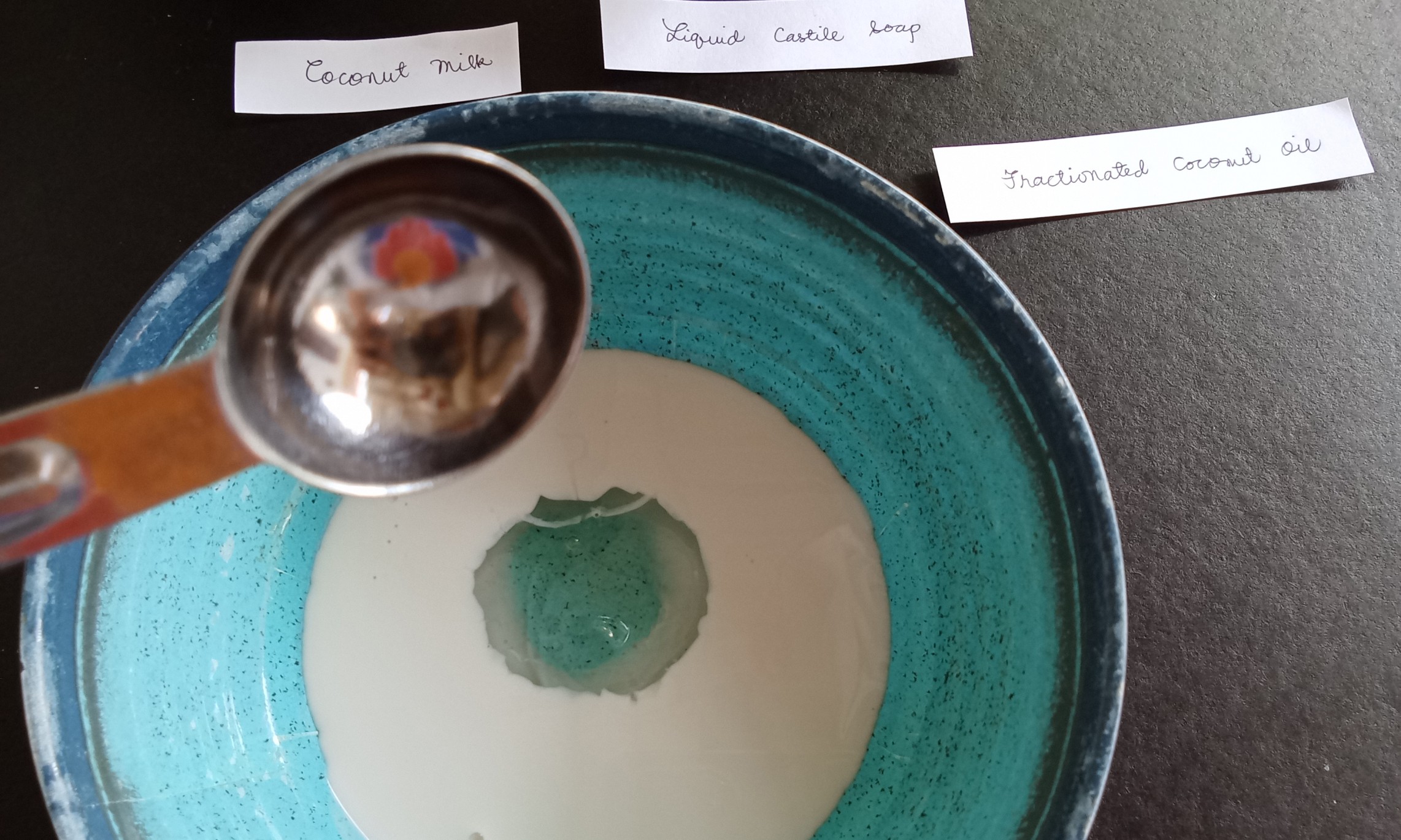
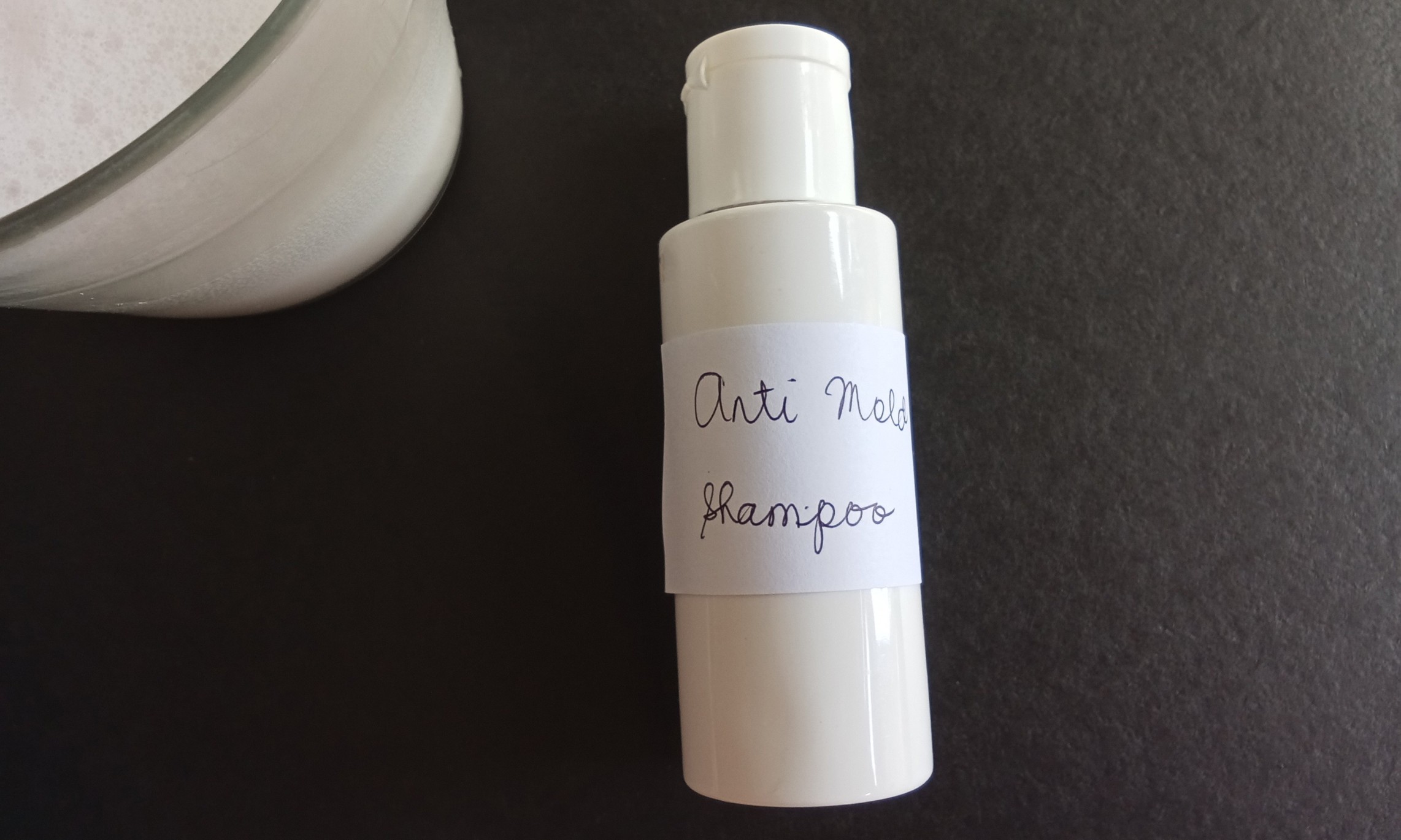
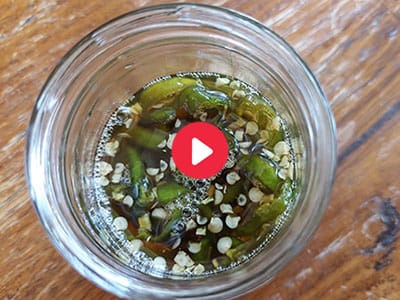
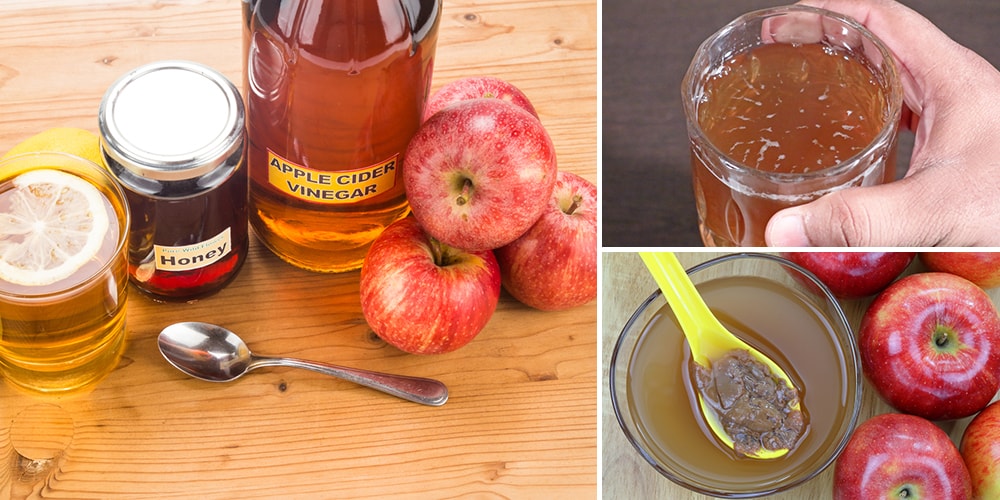
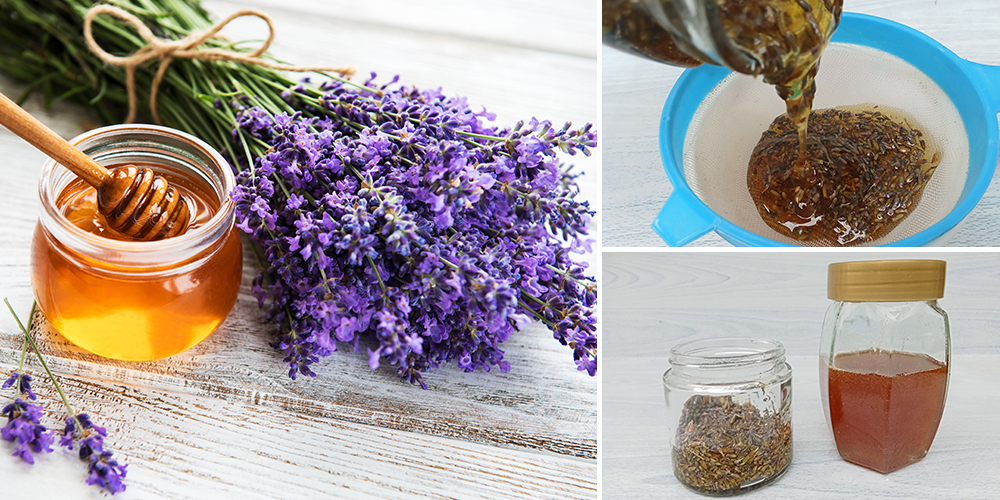

Seems to me that the AVC in this recipe would be cancelled out by the addition of soda, neutralizing each other, acid and alkaline mixed together makes no sense.
When I was healing from sever eczema on my hands, the only thing that helped me was ACV and baking soda diluted in a bit of water. Adding bicarb to the ACV lessens the acidic profile, but doesn’t cancel out the healing benefits 🙂
Will the coconut milk go bad if not refrigerated?